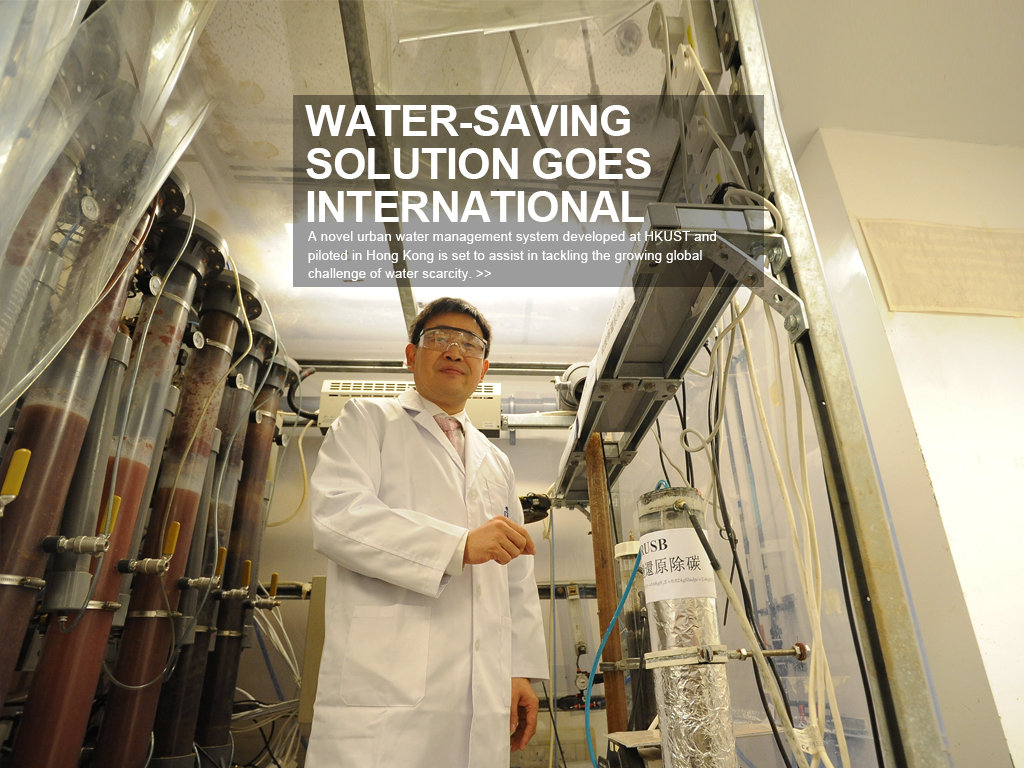Water-saving Solution Goes International
UNESCO collaboration
Under this significant collaboration, the innovative system will be introduced in Cuba later this year, together with local Cuban partners, as part of a three-year water-saving project funded by the European Union and UNESCO-IHE.
Measures being piloted in the capital city of Havana cover seawater supply, wastewater reuse, and the SANI process. SANI stands for Sulphate Reduction, Autotrophic Denitrification and Nitrification Integrated Process, an energy-efficient and low-carbon sewage treatment technology, developed by Prof Guanghao Chen, Department of Civil and Environmental Engineering, and his research team and utilizing Hong Kong’s unique seawater toilet flushing system.
"With 900 million people lacking safe drinking water and 80% of all diseases in the developing world related to water pollution, causing the deaths of some two million children annually, water issues are a major world problem. The situation is getting worse due to rising populations and climate change,” Prof Chen noted. “The project in Cuba can serve as a showcase for mitigating these challenges in developing countries.”
SANI efficiency
Hong Kong is currently the only location globally using seawater flushing on a city scale, saving 740,000 cubic meters of freshwater daily. By using sulphate-reducing bacteria and the sulphate in seawater to oxidize and eliminate pollutants, Prof Chen found he could get rid of 90% of sewage sludge production, reduce treatment costs by 50%, space requirements by 50% and cut greenhouse gas emissions by 35%. In addition, the use of seawater requires much less energy than producing freshwater, reclaiming wastewater and conducting desalination. After extensive studies and piloting, SANI is set for a full-scale trial at Shatin Sewage Treatment Works from this summer.
Seawater can further lower energy usage if integrated into centralized air conditioning systems as seawater cooling consumes 35%-50% less energy than air-cooling. A third benefit is that by installing two pipelines to collect wash water (grey water) and toilet water separately, the grey water can be reused for irrigation and other purposes.
Drive for change
HKUST researchers will go to Cuba in early April to finalize preparations, with installation and commissioning due in the second half of 2014. "As 60% of the world’s population is living in coastal areas, this could be revolutionary in changing the water cycle,” Prof Chen said. "It can tackle water shortages in various coastal cities and help those with a sludge problem in an economical and sustainable way.”
Other goals of the HKUST-UNESCO IHE collaboration are a joint postgraduate program on water and the environment, a joint educational and training center for water professionals and a joint research center on sustainable water infrastructure.
For more information, please click here.











